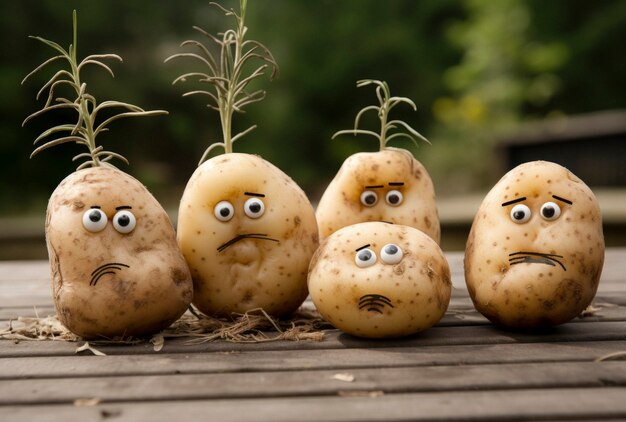
Sweet potatoes have played a vital role in the culinary traditions of countless cultures. But have you ever wondered about their origins, their incredible journey, and how they found themselves on plates across Texas? This blog dives into the fascinating history of sweet potatoes to uncover the remarkable story of their global travels.
From ancient cultivation to becoming a Texan staple, sweet potatoes have covered thousands of miles and generations of history. Whether you’re a curious foodie, history enthusiast, or simply someone with a love for sweet potatoes, we promise this voyage will intrigue and inspire you.
The Origins of Sweet Potatoes
The story of sweet potatoes begins approximately 5,000 years ago in Central and South America, specifically in what is now Peru and Ecuador. Sweet potatoes (scientifically called Ipomoea batatas) were a staple crop for the indigenous peoples of these regions, prized for their rich, starchy appeal and remarkable versatility in the kitchen.
Unlike regular potatoes (which originate from a different part of the Andes), sweet potatoes grow on creeping vines. They thrive in tropical and subtropical climates, making South America the ideal cradle for their origin.
The Sweet Potato’s Global Journey
The transformation of sweet potatoes from a regional crop to a global sensation is largely attributed to trade and exploration. Here’s a breakdown of their long and fascinating voyage:
1. Spread to Polynesia
Around 1,000 A.D., well before European explorers reached the Americas, sweet potatoes somehow found their way to the Polynesian islands. The exact mechanism of this spread remains debated among historians and scientists. Some theories suggest ancient Polynesians may have traveled as far as South America and brought back sweet potato cuttings, while others point to oceanic currents as the transporter.
This early dispersal demonstrates just how prized the sweet potato was. Its hardy nature, rich caloric content, and easy growth made it an invaluable crop for sustenance.
2. European Discovery & Trade Routes
Fast forward to the late 15th and early 16th centuries, when European explorers set sail to the Americas, they not only encountered indigenous civilizations—they also met their crops. Spanish and Portuguese sailors were captivated by sweet potatoes, bringing them back to Europe, Asia, and Africa through their growing colonial empires.
Sweet potatoes soon became a coveted, globally grown crop. China, for example, adopted the sweet potato from Portuguese traders, finding its high yield invaluable for feeding large populations during times of famine.
3. Sweet Potatoes in North America
Sweet potatoes began gaining serious recognition in North America during the 17th century. They thrived in the Southern states’ warm climate, becoming particularly popular in states like Virginia, the Carolinas, and Georgia.
4. Arrival in Texas
While surrounding Southern states were early adopters, sweet potatoes came to Texas via trade from neighboring regions and migrating settlers. By the 19th century, they had become a staple crop in Texas agriculture, planted extensively as a key food source.
Today, Texas continues to be a hub for cultivating sweet potatoes. Farmers in the state focus on growing varieties such as Beauregard, Jewel, and Covington due to their adaptability to Texas soil and climate.
Why Texans Love Sweet Potatoes
It’s no surprise that sweet potatoes hold a special place in Texan hearts. Beyond their tasty appeal, these tubers bring immense nutritional and cultural value to our tables.
1. Nutritional Powerhouse
Sweet potatoes are a rich source of vitamins A and C, potassium, and dietary fiber. Texans are proud of healthy, homegrown produce, and sweet potatoes embody this perfectly.
2. Versatility in Cooking
From savory casseroles to sweet pies, sweet potatoes lend themselves beautifully to Texan cuisine. Whether roasted, mashed, or turned into fries, their natural sweetness pairs effortlessly with a variety of spices and flavors.
3. Cultural Symbolism
The presence of sweet potatoes on Texan plates often symbolizes comfort and heritage. Many families have enjoyed them for generations, especially during festive occasions like Thanksgiving.
4. Adaptable Agriculture
Texas’s warm climate and fertile soils make growing sweet potatoes both easy and sustainable. This accessibility allows local farmers to keep this cherished food on tables year-round.
How Far Have Sweet Potatoes Really Traveled?
To put the sweet potato’s travels into perspective, here’s a rough estimation of their global mileage:
- From South America to Polynesia: ~6,000 miles (depending on the route).
- From South America to Europe (via Spain): ~5,500 miles.
- From Europe to Asia (China): ~4,000 miles.
- From European colonies to North America (Virginia): ~3,500 miles.
- From the Southern U.S. to Texas (Virginia to Austin): ~1,300 miles.
All in all, sweet potatoes have logged tens of thousands of miles to become the beloved Texan staple they are today.
A Staple Root with a Global Impact
Beyond their culinary appeal, sweet potatoes hold immense socio-economic value. Globally, they sustain millions of people, particularly in developing nations. Because sweet potatoes grow abundantly under minimal conditions, they are a beacon of food security in regions grappling with food scarcity and climate challenges.
Bringing It Home to Texas
While sweet potatoes have traveled countless miles to reach Texas, their true value lies in the connections they foster. They connect us to history, to sustainable agriculture, and to each other at the dinner table.
If you’re looking to savor their rich flavors and versatility, consider visiting a local Texan farmer’s market to pick up some fresh sweet potatoes for your next meal. Whether you’re roasting them with your favorite spices or baking a classic sweet potato pie, you’re celebrating the incredible global and historical story of this humble root vegetable.
Final Thoughts
Sweet potatoes are more than just a nutritious and versatile vegetable; they are a testament to human innovation and resilience in agriculture. Their remarkable ability to thrive in diverse climates and provide essential nutrients makes them a powerful ally in combating hunger and promoting sustainability. By incorporating sweet potatoes into your meals, you are not only enjoying their delicious flavors but also supporting local farmers and connecting with a rich agricultural heritage. As we continue to face evolving challenges in food systems and climate resilience, sweet potatoes remind us of the importance of sustainable practices and global interconnectedness. Why not make them a staple in your home and a symbol of these enduring values?
Conclusions
The importance of sustainable choices in today’s world extends far beyond individual preferences; it serves as a commitment to securing the health of our planet and future generations. By integrating nutritious, versatile, and environmentally friendly crops like sweet potatoes into our diets, we make a conscious effort to address global challenges such as food security and climate resilience. With their cultural richness and ability to thrive in diverse conditions, sweet potatoes symbolize the potential for innovation and solidarity in agriculture. Now is the time to prioritize such impactful decisions, ensuring that we contribute meaningfully to a healthier, more sustainable world.
FAQs
1. Why are sweet potatoes considered an environmentally friendly crop?
Sweet potatoes are environmentally friendly due to their low resource requirements and adaptability to various climates. They thrive in marginal soils with minimal water use, reducing strain on natural resources compared to other staple crops. Additionally, they have a high yield per acre, making them an efficient choice for sustainable agriculture.
2. What makes sweet potatoes a nutritious food option?
Sweet potatoes are a powerhouse of nutrition, rich in vitamins such as A, C, and B6, as well as dietary fiber and antioxidants. They provide a healthy source of complex carbohydrates, supporting sustained energy levels, and are known for their ability to support immune health and promote overall well-being.
3. How can sweet potatoes help address food security?
Sweet potatoes are a resilient crop that can grow in challenging environments, making them an excellent choice for regions vulnerable to climate change. Their ability to provide high yields and their nutritional density make them a strategic option for combating hunger and malnutrition worldwide.
4. What cultural significance do sweet potatoes hold?
Sweet potatoes hold immense cultural value in many societies, symbolizing sustenance, community, and tradition. They have long been a staple in various cuisines and agricultural practices, fostering connections between people and their environments through generations.
5. How can I incorporate sweet potatoes into my regular diet?
Sweet potatoes are incredibly versatile, fitting into a variety of dishes from baked and roasted options to soups, stews, and even desserts. They can be prepared in many ways to suit different palate preferences while maintaining their nutritional benefits.






